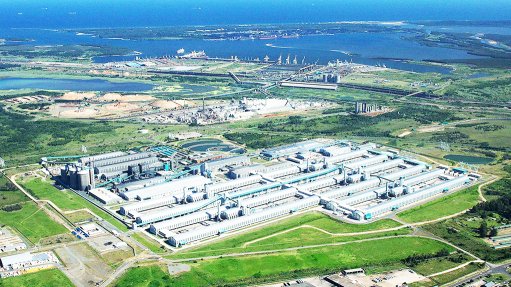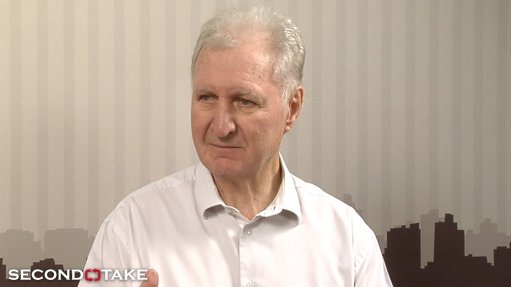Botswana’s Diamond State-owned Enterprise - Enhancing value or entrenching the political economy
This article has been supplied.
By: Sheila Khama
In many countries, extractives State Owned Enterprises, (SOEs) dominate economies but performance in governance and development terms varies. Some are spectacularly successful and have transformed nations. Others have been a colossal failure draining national coffers. For 50 years Botswana produced diamonds in partnership with De Beers but had no SOE in the industry until 2013 when Botswana created Okavango Diamond Company (ODC). https://www.odc.co.bw/) Though early, it is worth assessing the company’s direction of travel. So, in this extract from the last of four articles on Botswana’s diamond industry, featured on -www.sheilakhama.com/blogpage, I discuss the subject of ODC policy, governance and strategic direction.
These Are Our Diamonds: For most citizens, ODC’s creation was deemed natural, appropriate, and long overdue. The national feel good factor based on a patriotic sentiment and the knowledge that ‘these are our diamonds’ found resonance among Botswana’s politicians, civil society, academia, and the person on the street who said, ‘it’s about time.’ But noone quantified the economic impact that the company was expected to make or set standards for how it would be assessed because the sentiment alone seemed adequate and the rationale self-evident. For observers of regional policy in natural resources, it was familiar trend. In Algeria they said this is our gas, in Ghana this is our gold, this is our oil they say in Nigeria, this is our copper in Zambia and this is our lithium in Zimbabwe. It was a no-brainer and perhaps raising the question of whether public sentiment was an appropriate substitute for a policy and strategy risked a fall out. So, most went along. But students of mineral economics, governance and a policy analysts would nevertheless have wondered whether a mere sense of ownership would suffice developmentally .
How We Got Here: ODC was created following conclusion of negotiations to renew a 40 year diamond Sales Agreement between De Beers and Debswana (jv between Botswana and the company) at preset five year intervals. The company is governed by company law and led by a board appointed by Cabinet upon recommendation from the Minister responsible. This means the affairs of the SOE are in the hands of the party in power to the exclusion of Parliament. Up until then Debswana production was sold exclusively through De Beers. But in 2011 the agreements introduction of a Production Sharing Agreement (PSA). The aim was to supply ODC with Debswana diamonds for auctioning. ODC’s two main goals are to promote value addition of Botswana diamonds and to achieve price discovery, by securing pricing intelligence and availing to the Government’. This way the Government is no longer relied exclusively on De Beers for such information and presumably related expertise in the long run. In 2013 ODC’s purchased 12% of production and increased it to 15% in 2016 and 25% between 2020 and June 2023.
Job Creation Or Revenue Generation: Originally, ODC auctioned diamonds online. However, the company has since moved to in person auctions to companies vetted for participation. In October 2023, ODC increased its sales distribution channels. The first addition supplies citizen entrepreneurs such that they can purchase diamonds through a separate auctioning process. The reserve price is determined using the same methods as other ODC auctions. To qualify to participate, the company bidding must be owned by a Botswana citizen in possession of a Precious Gems Dealers License (PGDL) and registered as an ODC customer following a vetting process. The second is that ODC will introduce contracts for international clients without any conditions. A third is that ODC will add contracts for beneficiation of the diamonds in Botswana. The first such contract would have been with HB Antwerp but this latest decisions extends at least an aspect of what seems to be a done deal. The fourth is contract with international clients operating outside Botswana. The additional threes and existing auctions are open to all and because with the exception of contracts for beneficiating in Botswana, ODC does not concern itself with whether the goods are manufactured in Botswana or exported rough, the likelihood is that the bulks of Botswana diamonds will continue to be exported.
The result will be that ODC diamonds will promote other destinations including the United Arab Emirates (UAE) as a rough diamond sale centres and not Botswana as one might expect of a SOE. Indeed, according to the OEC, the fastest growing import sources for diamonds into the UAE between 2020 and 2021 were led by Botswana at $983m, followed by Belgium at $953m, and Russia at $472m. - Diamonds in United Arab Emirates | The Observatory of Economic Complexity (oec.world). What this reminds us of is that in an inexplicable and counterintuitive policy move, up to the end of 2022, ODC was not obliged to supply Botswana cutting and polishing factories. Instead, as per 2006 and 2011 agreements, most of the factories received supply from De Beers using aggregated goods from Botswana and other countries. Up until 2022, the Government’s policy was to simply auction Debswana goods from ODC and let buyers determine where they cut them. This undermined the Government value addition goal and it is not clear how ODC contributes to value addition under the circumstances.
However, starting from 2023 and though only a portion of ODC’s stocks, the decision to introduce beneficiation contracts addresses this loophole. This followed a June 2023 announcement to extend the sales agreement for 10 years and increasing ODC’s share immediately from 25% to 30% and to reach 50% by year 10. The increase represents a quantum leap and an extraordinary achievement after only 12 years of production sharing. Strategically it gives the Government freedom to decide how to use 50% of Botswana diamonds. It enables Botswana to test De Beers price performance. It creates a balance of power such that not only do the partners share 50% of dividends they will ultimately share 50% of production. Equally, it opens the window for ODC to increase supply to local cutting factories without any reference to De Beers and the latter’s historic clients. All considered therefore, ODC should perform as well as if not better than De Beers. The absence of details on the split of value sold between the four channels leaves the Botswana public guessing as to where up to 50% of their diamond wealth will end up.
But the process also suggests that the strategy of ODC is being developed piece meal. There appears to be a desire to placate potential stakeholder criticisms by availing diamonds to a cross section of businesses. For a market in which demand exceeds supply, the approach could bring pressure on those in power. If so, ODC will be vulnerable to one of the common causes of poor governance. The advent of the political economy and substitution of a policy with powers of discretion by authorities. Even more importantly, if ODC continues not to commit large quantities to the 46 factories in the country, it begs the question of how the Government reconciles ODC business with its value addition goal. Unless ODC supplies the factories and augments De Beers’ goods significantly, the losers will be those investors who opened factories in the country over the last 20 years and Botswana’s jobseekers who would have benefitted from the expansion of the industry. The clear frontrunner would be UAE including the Dubai Multi Commodities Centre (DMCC) and whichever other cutting centers Botswana diamonds are destined for.
Equally inconsistent with Government policy is the fact that the negotiations with the UAE and HB Antwerp occurred outside the stated framework of government advisers known as the Mineral Policy Committee. Some of the decisions above were taken without the involvement of the Parliament, the board, or executives of ODC. Though constitutional and legal, this is a misstep from a governance and due process point of view. Unless matters are regularized, it is difficult to see how ODC avoids the fate of other SOEs in and out of the country in which the business environment is stable and SOEs lack autonomy.
A Complex Ecosystem: Operationally, keeping a tap on the government’s interests in this part of the value chain will be a challenge. Between the SOE, DBGSS and Diamond Trading Company Botswana, the Government has direct or indirect equity in three separate entities in the country, each marketing rough diamonds to different clients and through different channels and using a range of sales mechanisms. Given the Government’s limited experience in marketing rough diamonds, this will make oversight of the trading environment potentially difficult. ODC and DBGSS also potentially compete with one another for supply and clients. Though the parties have addressed this with a ‘none compete clause’, the question is, why stifle competition and deny Botswana the benefit? What do the parties have to fear if the new arrangements pass the test of governance?
On the positive side, ODC’s annual sales were about US$1b in the last two years. So, based on volume of trade, the goal of price discovery was met, and ODC offers market intelligence to the Government. This bodes well for skills transfer and independence from De Beers. But the question, how is the Government uses the information to add value remains. The impact of auctioning on the stability of public revenue given diamond market volatility needs attention too. The data and information is valuable for determining future production sharing arrangements and developing negotiation and risk strategies. Otherwise, the Government misses an opportunity to deploy fact-based resources to guide policy and build institutional capacity.
What Next: The future is brightly unclear in part because the creation of the SOE is recent. Unsurprisingly, there will be growing pains as can be seen from the impacts of a diamond market lull only three months from the 2023 the agreements. So, commentary on ODC policies must be seen through this narrow lens for now. But the Government needs to quickly consolidate its policy direction starting with alignment of ODC marketing strategies with the company’s mandate and then the Government’s value addition policy or risk derailment. It needs a clear direction on how it manages sales arrangements with De Beers as it has clearly abandoned the 1969 single arrangements. Progressive erosion of De Beers’ share of supply and therefore profits raises the question of how the company responds. This makes ODC vulnerable and necessitates mitigation of unintended consequences. If successfully addressed, ODC will buck the trend but if not, it may suffer the fate of other SOEs in and outside Africa.
Sheila Khama is a Policy Advisor, Podcast Host, NED of FTSE, NASDAQ and ASX companies and an Associate Fellow of Chatham House. She is former CEO of De Beers Botswana, a former NED in Debswana and DTC Botswana.
Visit www.sheilakhama.com/blogs for the full article.
Comments
Press Office
Announcements
What's On
Subscribe to improve your user experience...
Option 1 (equivalent of R125 a month):
Receive a weekly copy of Creamer Media's Engineering News & Mining Weekly magazine
(print copy for those in South Africa and e-magazine for those outside of South Africa)
Receive daily email newsletters
Access to full search results
Access archive of magazine back copies
Access to Projects in Progress
Access to ONE Research Report of your choice in PDF format
Option 2 (equivalent of R375 a month):
All benefits from Option 1
PLUS
Access to Creamer Media's Research Channel Africa for ALL Research Reports, in PDF format, on various industrial and mining sectors
including Electricity; Water; Energy Transition; Hydrogen; Roads, Rail and Ports; Coal; Gold; Platinum; Battery Metals; etc.
Already a subscriber?
Forgotten your password?
Receive weekly copy of Creamer Media's Engineering News & Mining Weekly magazine (print copy for those in South Africa and e-magazine for those outside of South Africa)
➕
Recieve daily email newsletters
➕
Access to full search results
➕
Access archive of magazine back copies
➕
Access to Projects in Progress
➕
Access to ONE Research Report of your choice in PDF format
RESEARCH CHANNEL AFRICA
R4500 (equivalent of R375 a month)
SUBSCRIBEAll benefits from Option 1
➕
Access to Creamer Media's Research Channel Africa for ALL Research Reports on various industrial and mining sectors, in PDF format, including on:
Electricity
➕
Water
➕
Energy Transition
➕
Hydrogen
➕
Roads, Rail and Ports
➕
Coal
➕
Gold
➕
Platinum
➕
Battery Metals
➕
etc.
Receive all benefits from Option 1 or Option 2 delivered to numerous people at your company
➕
Multiple User names and Passwords for simultaneous log-ins
➕
Intranet integration access to all in your organisation















